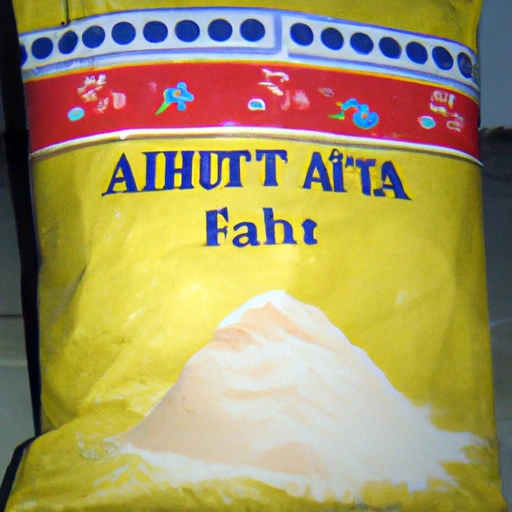Chapati Flour
Description

Chapati flour, known as 'Atta' in Hindi, is a finely milled whole wheat flour commonly used in South Asian cooking. Unlike all-purpose flour, chapati flour is ground from the entire wheat kernel, which means it retains more fiber and nutrients. It's a staple ingredient for making traditional Indian flatbreads like chapatis, rotis, and parathas. This special flour has a distinct texture, is rich in dietary fiber, and offers a nutty flavor.
In recipes, chapati flour can be measured in cups (American), grams or kilograms (European), or ounces and pounds (both). A common conversion might be 1 cup (American) equating to approximately 120 grams (European).
Common uses
Chapati flour is predominantly used to prepare unleavened flatbreads. These flatbreads are a dietary staple in Indian, Pakistani, Nepali, Bangladeshi, and Sri Lankan cuisines. It is also used to make a variety of other dishes, including stuffed parathas, pooris, and some types of snacks and sweets.
Nutritional value
Calories
Per 100 grams, chapati flour typically contains around 340 to 360 calories.
Protein
Chapati flour is a good source of protein, offering about 10 to 13 grams per 100 grams serving.
Fat
It is low in fat, with around 1.5 to 2 grams per 100 gram serving.
Carbohydrates
Chapati flour is rich in carbohydrates, providing about 70 to 75 grams per 100 gram serving.
Vitamins
It contains vitamins such as B-complex vitamins including folate, thiamin, and niacin.
Minerals
Essential minerals found in chapati flour include phosphorus, iron, magnesium, and zinc.
Health benefits
Eating chapati flour can contribute to a healthy diet. Its high fiber content helps in digestion and promotes a feeling of fullness, which can aid in weight management. The presence of whole grains has been linked to a lower risk of chronic diseases such as type 2 diabetes and heart disease.
Potential risks
While chapati flour is nutritious, it contains gluten, which makes it unsuitable for those with celiac disease or gluten sensitivity. Additionally, overconsumption of any kind of flour can lead to weight gain due to its high carbohydrate content.
Common recipes
Chapati, roti, paratha, naan, and various stuffed breads are common recipes that use chapati flour.
Cooking methods
Typical cooking methods include rolling and pan-frying on a tava or skillet. Chapati flour can also be used for baking and deep-frying.
Pairing with other ingredients
Chapati flour pairs well with spices, herbs, and vegetables in savory dishes, as well as with fruits and sweeteners in desserts.
Summary
Chapati flour is a versatile whole wheat flour essential in many South Asian cuisines. Its nutritional benefits and rich, wholesome flavor make it a valuable ingredient for various culinary applications, from traditional breads to innovative modern recipes.